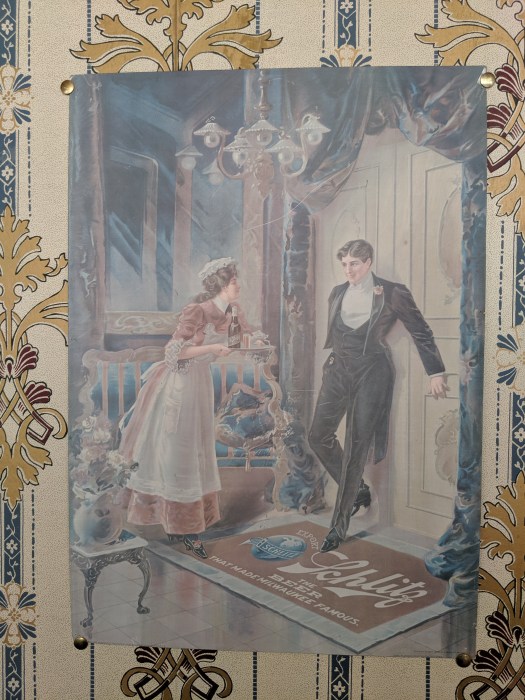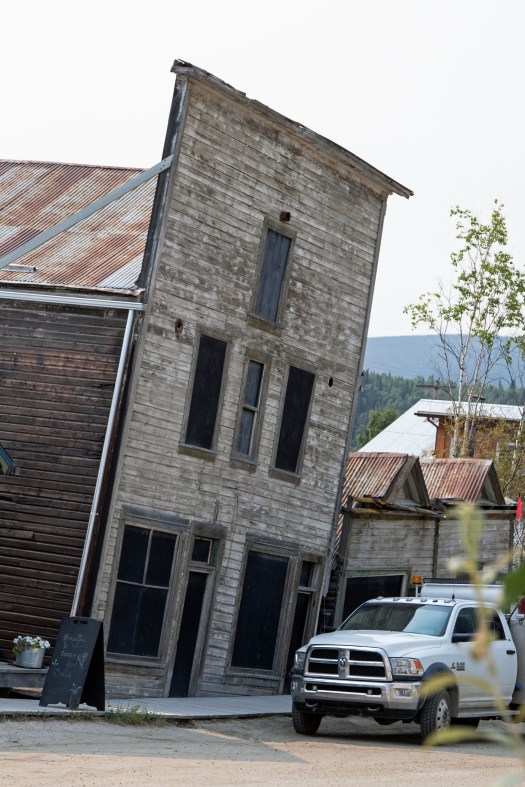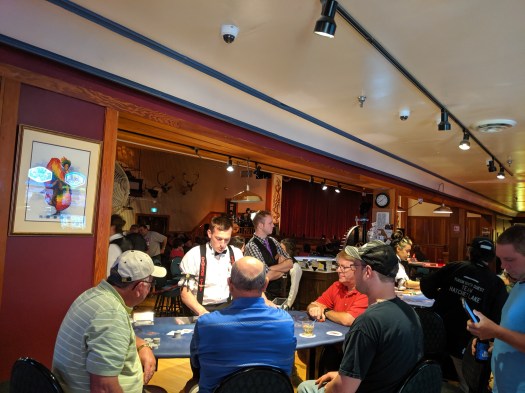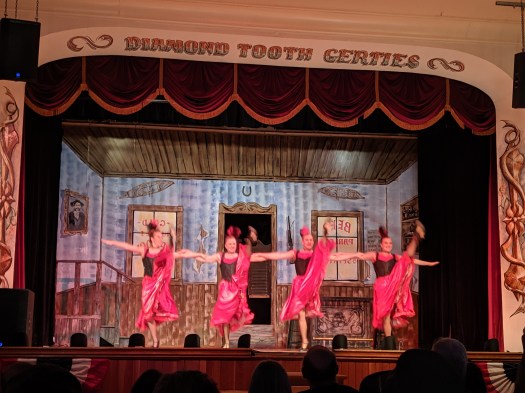Dawson City. Once the capital of the Yukon, it exploded in the late 1890s after reports of the discovery of gold. Men, and some women, poured into the city from all over North America, only to find that all of the claims had been staked by the time they arrived. At one point, it was the largest city west of Winnipeg and north of San Francisco.
Sadly, the influx of thousands completely trampled over traditional First Nations territory that they’d used for hundreds of years. The local people were called the Tr’ondëk Hwëch’in. Non-natives, trying to say this, turned it into Klondike, which is the name of the area to this day.
Today, Dawson City is home to around two thousand permanent residents. They are very serious about preserving the past and have strict rules about what types of businesses are allowed in—for example, there are no franchises located in the city. No Starbucks, no McDonald’s, not even that Canadian staple, Tim Horton’s. You must make the long drive to Whitehorse if you want anything like that. No roads have been paved other than the main road, which is the Alaska Highway.
They have been able to do an amazing job restoring some of the original buildings. One benefit of being so far from everywhere, and requiring a very arduous journey to get there, is that people just abandoned all of their stuff when they left. There are thousands of artifacts left over from the boom days, which makes restoration much easier—pictures of how a place looked abound, as well as the original fixtures and pieces.
We began the day by meeting at the Visitor Center. Initially, I thought it was a former railway station like the Visitor Center in Dawson Creek, until I realized that the railroad never came to Dawson City. If you wanted to get here, you had to walk, ride or sled in the winter; steamboat or your own boat in the summer. One of the Parks Canada workers met us dressed in period clothing and we had a 1.5 hour walking tour of the city. She’s lived here for over 20 years and was not only a fount of knowledge, but also very entertaining.



















After the walking tour, I went with Jerry and Wendy H. to several museums. First, we went across the street to the Dänojà Zho, which means “long time ago house” in the native Han language. Devoted to the story of the Tr’ondëk Hwëch’in, we watched a movie, wandered through an art gallery and a display of how they’d lived prior to the gold rush.




Next, we headed over to the Jack London museum. It’s small, but has a lot of information inside, as well as a recreation of the log cabin he lived in for the brief time he lived in the area on a gold claim. He didn’t start writing until after returning to Oakland, California. Yet the Klondike had an enormous impact on his writing and was the subject or the setting for many of his novels. I still remember reading Call of the Wild and White Fang when I was in school.




We then went to look at the ferry—I’ll explain that more in my post on leaving Dawson for Alaska—and discovered the Dawson City Firefighters museum. Jerry’s career was spent as a firefighter and then chief, so he was very interested in going through it. It was interesting to learn about the old fire wagons, one of which was still in use until the 1940s!



I went back to my RV for a few hours, then headed back to the downtown area for our evening’s entertainment at Diamond Tooth Gertie’s. This is a gambling hall and saloon, with three Can Can shows each night. All of the proceeds go to local charities. I did play some slots, and ended up in the black by $5. Terri S. won over $50, so there was some luck going around for sure. We watched the first show, which was made even better by two of our guys being picked out of the audience to go up on stage with the ladies. Bob G. and Steve S. (from VA; we have two Steve S.’s) were great sports and did a very good job being honorary Can Can dancers.







Once I cashed out with my extra $5, I went back to my RV and crashed. However, a good number of people stayed out, and a lot of them headed for the Downtown Hotel, famous for their Sourtoe Cocktail, which I mentioned above. It’s one of those things that makes Dawson City somewhat famous. This is a drink that started in the 70’s and has a literal human toe in it. You get to pick your liquor of choice, though apparently there is a rule that it must have a certain % of alcohol—nothing weak allowed.
The mummified toe is placed in the glass, and, as the saying goes, “drink it fast or drink it slow, but to your lips the toe must go.” You must touch the toe, but you’re not allowed to “suck, bite or swallow” the toe. Once you’ve done it, you get a certificate that you’ve completed the challenge. They’re up to over 87,000 people now. Three of our guys did it—Roger, Steve S. (WI), and Doc. Apparently, there was quite a line to do it—it was the weekend before Canada Day (July 1st) and the River Questers that started in Whitehorse had finished their race and were celebrating in style. As Robert Service, a poet of the Klondike, once said, “strange things happen under the midnight sun.” Amen to that!


Curious, does anyone know who the toe belonged to? Can Can girl or miner?
LikeLike
I believe the original toe was a miners. There are back up toes as well, from people who got frostbite, etc.
LikeLike